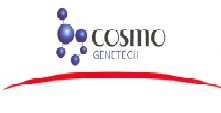Team:Korea U Seoul
From 2010.igem.org
(Difference between revisions)
| (16 intermediate revisions not shown) | |||
| Line 4: | Line 4: | ||
{|align="justify" | {|align="justify" | ||
| - | | Our team project is designing synthetic modules for simultaneous detection of multiple heavy metals such as arsenic, zinc, and cadmium in E. coli. Our ultimate goal is to build a micromachine sensing and determining of the concentration of heavy metals in wasted water. And we hope that can be helpful for all of human in this planet!! | + | | Our team project is designing synthetic modules for simultaneous detection of multiple heavy metals such as arsenic, zinc, and cadmium in ''E. coli''. Our ultimate goal is to build a micromachine sensing and determining of the concentration of heavy metals in wasted water. And we hope that can be helpful for all of human in this planet!! |
|- | |- | ||
| In order to design the system, we will employ two fluorescence proteins (GFP and RFP) and aryl acylamidase as signal reporters. Since each heavy metal promoter produces unique fluorescence or color by those reporters, if more than two heavy metals coexist in a solution, the results would be interpreted from the convoluted fluorescence and/or color rather than a single signal detection. | | In order to design the system, we will employ two fluorescence proteins (GFP and RFP) and aryl acylamidase as signal reporters. Since each heavy metal promoter produces unique fluorescence or color by those reporters, if more than two heavy metals coexist in a solution, the results would be interpreted from the convoluted fluorescence and/or color rather than a single signal detection. | ||
| - | The successful construction of the synthetic modules in E. coli can be utilized in the form of a lyophilized powder, which can be stored in a drug capsule to make it portable. | + | The successful construction of the synthetic modules in ''E. coli'' can be utilized in the form of a lyophilized powder, which can be stored in a drug capsule to make it portable. |
|- | |- | ||
| | | | ||
| Line 15: | Line 15: | ||
<hr> | <hr> | ||
<br> | <br> | ||
| - | |||
{| align=center cellpadding=5 border=0 style="font-family: Georgia; font-size: 12pt" | {| align=center cellpadding=5 border=0 style="font-family: Georgia; font-size: 12pt" | ||
| - | |||
|[[Image:kulogosymbol.png|150px]] | |[[Image:kulogosymbol.png|150px]] | ||
|[[Image:ctl.jpg|150px]] | |[[Image:ctl.jpg|150px]] | ||
|[[image:csbllogo.gif|150px]] | |[[image:csbllogo.gif|150px]] | ||
|[[Image:코스모진텍.jpg|150px]] | |[[Image:코스모진텍.jpg|150px]] | ||
| + | |<html><body><a href="https://2010.igem.org"><img src="https://static.igem.org/mediawiki/2010/b/b0/UCL-Igem.png" width="150" height="114" /></a></body></html> | ||
| + | |<html><body><a href="https://2010.igem.org/Team:Freiburg_Bioware/Team/Cuckoo_Clock"><img src=" https://static.igem.org/mediawiki/2010/d/d2/Freiburg10_Cuckoo_Clock_Koera_U_Seoul.png" width="100" height="114" /></a></body></html> | ||
|} | |} | ||
<br><br> | <br><br> | ||
Latest revision as of 02:26, 28 October 2010

| Our team project is designing synthetic modules for simultaneous detection of multiple heavy metals such as arsenic, zinc, and cadmium in E. coli. Our ultimate goal is to build a micromachine sensing and determining of the concentration of heavy metals in wasted water. And we hope that can be helpful for all of human in this planet!! |
| In order to design the system, we will employ two fluorescence proteins (GFP and RFP) and aryl acylamidase as signal reporters. Since each heavy metal promoter produces unique fluorescence or color by those reporters, if more than two heavy metals coexist in a solution, the results would be interpreted from the convoluted fluorescence and/or color rather than a single signal detection.
The successful construction of the synthetic modules in E. coli can be utilized in the form of a lyophilized powder, which can be stored in a drug capsule to make it portable. |

| 
| 
| 
| 
|
 "
"
